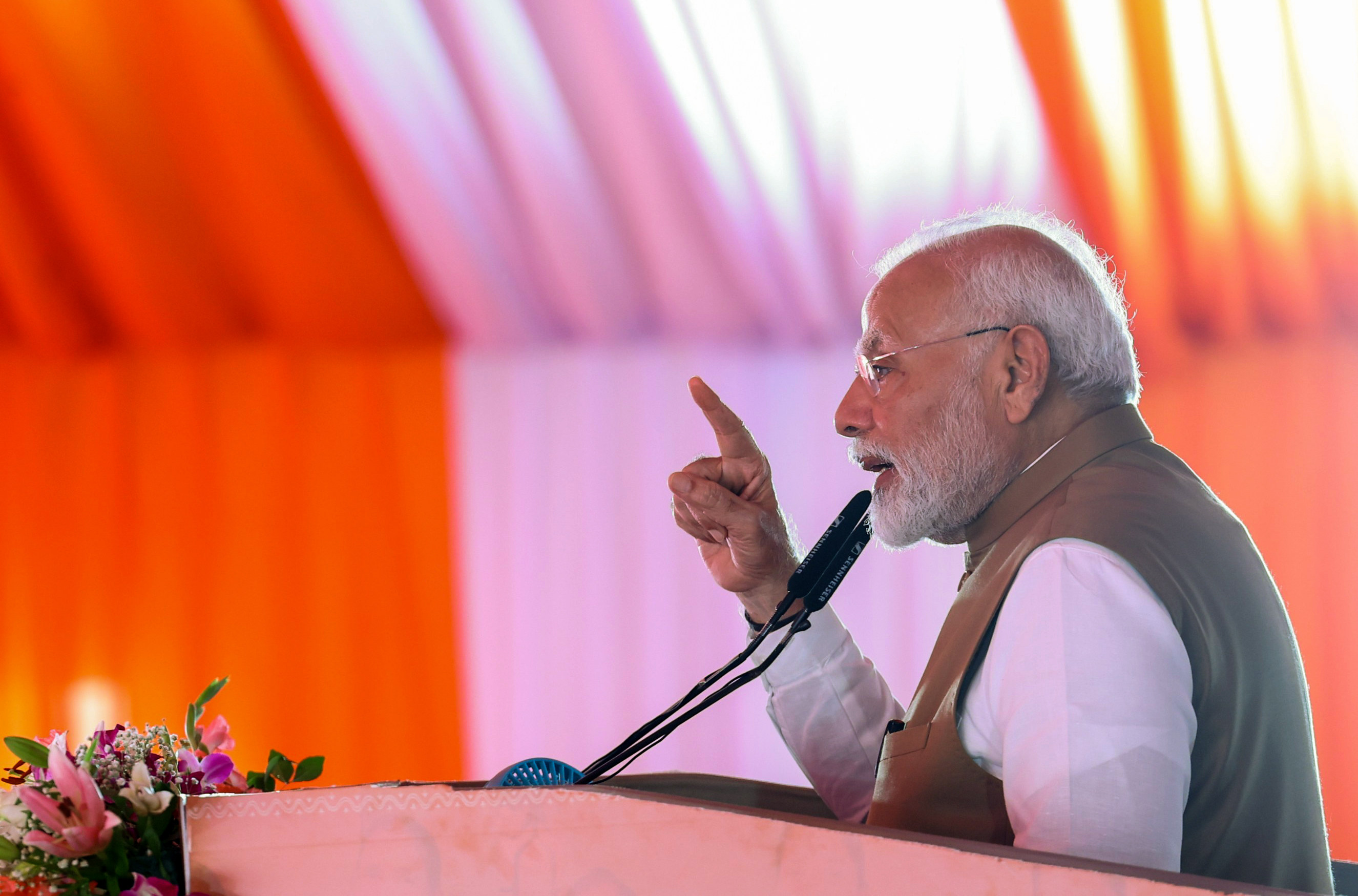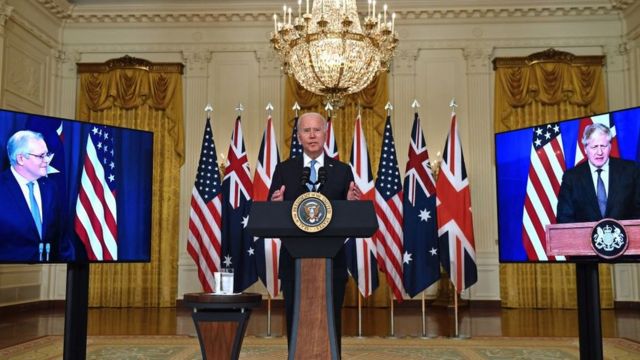For over a decade now, both the US and China have been racing to develop Artificial Intelligence (AI) and other emerging technologies to gain a competitive edge which will assist to secure even greater power, wealth, status and influence
Rajneesh Singh
On 16 September 2022, US National Security Advisor Jake Sullivan announced a change in the US policy of being “only a couple of generations ahead” of China in key technologies to maintaining “as large of a lead as possible”. The Biden administration has identified three families of technologies which will be of particular importance over the coming decade and one of them is computing-related technologies, including microelectronics, quantum information systems and artificial intelligence. Preserving the lead and denying the same to the competitors in these arenas are being advanced by the administration as a “national security” issue. The US has also secured the commitment of its allies and partners to choke China’s semiconductor industry and “reduce collective reliance on Asia” of EU–US alignment on rare earths. The US efforts to limit the advancements around the world in this field of science and technology is poised to define the geopolitical landscape of the 21st century.
This Brief will examine the strategic motivation behind the US attempts to decouple from China in the field of advanced chip manufacturing and key challenges faced by the US and its allies in these efforts. The Brief will thereafter highlight opportunities and challenges decoupling of China presents for India for its semiconductor ambitions.
In the history of warfare, the human ability to innovate and employ latest technology have been decisive factors in winning wars. For over a decade now, both the US and China have been racing to develop Artificial Intelligence (AI) and other emerging technologies to gain a competitive edge which will assist to secure even greater power, wealth, status and influence.
In April 2017, the US initiated Project Maven to accelerate AI capabilities that will enable it to digitally identify and track targets using surveillance assets, which will assist in furthering combat efficiency by employing data technology. Maven is one of hundreds of AI initiatives being pursued by the Pentagon. The then-Deputy Defense Secretary Bob Work established the Algorithmic Warfare Cross-Functional Team, which is overseen by the Defense Undersecretary for Intelligence (known as the USDI), under Project Maven. Advanced AI chips are central to this effort.
Recognizing the importance of AI for warfare, the Chinese government announced US$ 100 billion in semiconductor industry subsidies in 2014. In 2015, China’s State Council published Made in China 2025, with the objective of manufacturing semiconductors by 2025 and replacing imports with Chinese-made products. China launched these initiatives two years before Project Maven was launched by the US.
In 2017, China went on to release its AI strategy, China’s New Generation Artificial Intelligence Development Plan. This aspirational document sets out a top-level design blueprint charting the country’s approach to developing AI technology and applications, setting broad goals up to 2030. China declassified its AI strategy four years before the US National Security Commission on Artificial Intelligence released its final report. This realization of the importance of AI and semiconductors provided the necessary impetus to the Chinese government to make self-reliance in chip manufacturing a national priority.
High-end chips come with sufficient memory and memory bandwidth to handle data-intensive workloads, such as natural language processing and computer vision, efficiently. High-end chips are also energy efficient. Energy efficiency of advanced semiconductor chips prevent the batteries from draining out quickly, a crucial requirement for both data center operations and terminal devices.
High-end semiconductor chips, therefore, are the backbone of AI development and deployment. They are indispensable to AI ecosystem and have a direct bearing on advancements of weapon platforms and surveillance systems. The chips provide the necessary computational power, energy efficiency, and specialized hardware to make AI applications and research feasible and efficient. Even as AI continues to advance, the role of high-end chips will remain central to its development.
The advancements in science and technology will define the geopolitical landscape of the 21st century including new military and intelligence capabilities that will shape national security. The US has, therefore, made preserving technological edge a national imperative.
The Trump administration pursued an aggressive policy of trade war and sanctions against China which the current Biden administration has moderated, and is working to identify areas of cooperation. This notwithstanding, the US is determined to limit flow of technology to China—notably semiconductors—and invest in technology innovation at home. In August 2022, President Biden signed the CHIPS and Science Act, an Executive Order on Advancing Biotechnology and Biomanufacturing Innovation, and the Inflation Reduction Act. The CHIPS Act aims to invest US$ 52 billion to restore US leadership in semiconductor manufacturing and R&D and reduce over-reliance on foreign-produced chips.

The export controls policy on AI and semiconductor technologies to China announced by the US on 7 October 2022 was a “major diplomatic gamble”. These export controls were designed after consultation with key US allies, but the US originally implemented them unilaterally. In late January 2023, the US, Japan and the Netherlands reached a landmark agreement on semiconductor technology export controls to China.
The semiconductor industry is one of the world’s most globalized industries. A factor which has contributed to globalization of this industry has been the unification of the mobile communication standards. This has led to the development of the globalized supply chain, of which China is an important player. Integrated circuit chips are indispensable to mobile communication devices. Globalized supply chain of popular iPhone abundantly demonstrates the challenges the US and its Western partners will face to decouple from China. The chips used in the phone are designed in the US, produced in Taiwan, packaged in Southeast Asian countries, and assembled with other components from Japan, South Korea, Europe and China to form a complete phone.
China has been investing huge sums of money to further its semiconductor ambitions. The China Integrated Circuit Industry Investment Fund, also known as the ‘Big Fund’, has launched three funds till date. The first two funds were launched in 2014 and 2019, which according to government reports, raised 138.7 billion yuan (US$ 19 billion) and 200 billion yuan (US$ 27 billion) respectively. In September 2023, the Chinese government announced that it aims to raise about 300 billion yuan (US$ 41 billion).
Over the last decade, huge sums of money have flowed into the semiconductor industry with little oversight leading to corruption. In 2021 and 2022, China undertook an anti-corruption drive in its semiconductor funds, punishing individuals for graft and wasteful spending. The Central Commission for Discipline Inspection (CCDI), the CCP’s anti-graft agency, has probed several senior officials and former officials at SINO-IC Capital, the sole manager for the ‘Big Fund’.
Despite ongoing anti-graft investigation, SINO-IC Capital is expected to remain one of the managers for the third fund, a sign of both desperation and importance attached to semiconductor industry by the Chinese decision-makers. The desperation arises from the fact that despite some successes, like the Semiconductor Manufacturing International Corporation (SMIC), ‘Big Fund’ investments have failed to meaningfully reduce China’s reliance on imported technology.
To frustrate US led effort to decouple the country from advanced chip technology, China is directing its resources and efforts towards manufacturing cutting-edge processors as also attempting to become competitive in legacy chip manufacturing. In August 2023, when US Commerce Secretary Gina Raimondo was visiting the country, Huawei released Mate 60 Pro, a phone featuring an unexpectedly advanced processor. The processor was made on a 7-nanometer process node, a capability that US export controls seek to deny.
It is quite likely that the chip designing for Mate 60 Pro has been done in-house by Huawei’s Hisilicon, which can design advanced chips, especially for smartphones. However, the fabrication of the chip, in all possibility, has been undertaken by SIMIC using US equipment without such a license. It has also been reported that several Taiwanese technology companies are helping Huawei Technologies Co. build infrastructure for an under-the-radar network of chip plants across southern China.
The term ‘legacy chip’ is a misnomer. It refers to semiconductor produced on older process nodes with less dense circuitry. Except in the most advanced computer processors, these chips are used in highly advanced applications, such as state-of-the-art microwave integrated circuits and electric vehicles. Chinese dominance in legacy chip ecosystem will provide the country with levers wherein it can exercise control over essential services such as energy infrastructure, automotive industry, emergency response systems to even everyday consumer electronics.
India’s capabilities in large-scale semiconductor manufacturing are almost non-existent. India had announced semiconductor policies on two previous occasions—in 2007 and then in 2013. The governmental initiatives failed for a variety of reasons. In 2007, it was felt that the government delayed the passage of the semiconductor policy and the financial initiatives provided were also considered inadequate. The government’s efforts in 2013–14 also failed to make a dent in India’s semiconductor manufacturing ecosystem.
In March 2022, the government announced India Semiconductor Mission (ISM) with a vision to build a vibrant semiconductor and display design and innovation ecosystem to enable India’s emergence as a global hub for electronics manufacturing and design. A total outlay of INR 76,000 crore has been announced for the development of semiconductor and display manufacturing in the country. The programme aims to provide financial support to companies investing in semiconductors, display manufacturing and design ecosystem. ISM has been set up as an Independent Business Division within Digital India Corporation (DIC).
Yet, for all the good intentions associated with ISM, it should avoid the pitfalls of the past which were a drag on India becoming a manufacturing hub. Robust inter-ministerial coordination and provisioning of necessary facilities including infrastructure and funds is essential for seamless policy implementation. India is home to 20 per cent of the global workforce that designs chips. But foreign firms own the intellectual property underlying the chip designs. In case of chip manufacturing, India’s policy will require applicants to own production-grade, licensed technologies. Proper training of talent or the workforce is also essential. India also needs to address infrastructure concerns, especially the availability of land.
Rajneesh Singh is Research Fellow at the Manohar Parrikar Institute for Defense Studies and Analyses, New Delhi
Views expressed are of the author and do not necessarily reflect the views of the Manohar Parrikar IDSA or of the Government of India.
The full version of this article first appeared in the Comments section of the website (www.idsa.in) of Manohar Parrikar Institute for Defense Studies and Analyses, New Delhi on October 24, 2023


























